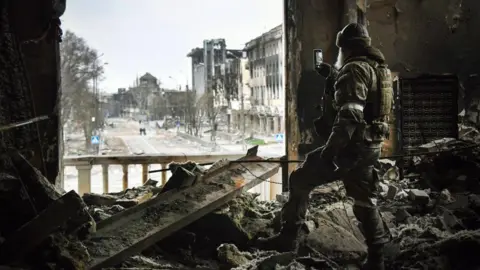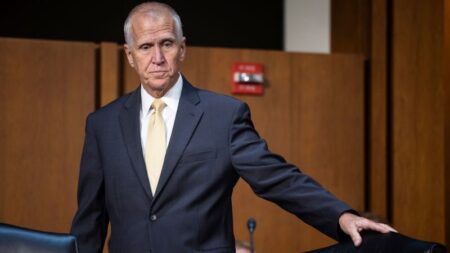The article titled “Mariupol is diseased: Residents deny Russia’s stories about occupied city,” features a poignant narrative from individuals residing in the war-torn city of Mariupol, which has been under Russian occupation since it fell after a brutal siege more than three years ago. The piece offers a stark contrast between the Russian government’s representations of life in the city and the harrowing realities faced by its inhabitants, who maintain that the conditions in Mariupol are dire.
John, a Ukrainian who remains in Mariupol under a pseudonym to protect his identity, directly criticizes the portrayal of the city on Russian television. He asserts that the clips aired as part of state propaganda represent “fairy tales for fools,” arguing that while surface-level repairs are visible in some heavily monitored areas, much of the city remains in ruins. He notes that behind the façades of freshly painted buildings lies rubble and vacant spaces, with many citizens still residing in dangerously damaged apartments.
Mariupol has suffered immensely during its occupation, having experienced substantial destruction during the initial stages of Russia’s full-scale invasion in early 2022. The United Nations reported that approximately 90% of residential structures sustained damage, and the number of casualties reached into the thousands. In response to these catastrophic events, recent social media posts from pro-Russian influencers have depicted an entirely different narrative—one where reconstruction is underway and normalcy is being restored. However, interviews with several displaced residents reveal these claims to be misleading.
Olha Onyshko, a 66-year-old escapee from Mariupol now living in Ternopil, Ukraine, shares similar sentiments, describing a lack of substantive repairs outside prominent public spaces. She recalls the indiscriminate nature of the cleanup efforts, remarking that bodies were transported out with debris, signifying a lack of respect for the deceased amid the operations.
Moreover, Mariupol faces critical challenges regarding access to clean drinking water. James, another resident speaking under a different name, laments the sporadic water supply, describing the water quality as concerningly poor—cloudy in appearance and unfit for consumption, even after boiling. Serhii Orlov, identifying himself as the city’s deputy mayor in exile, emphasizes the dismal water situation caused by damage to the Siverskyi Donets-Donbas Canal during the conflict. He indicates that the primary reservoir meant to serve the population has since depleted, highlighting severe shortages of basic resources, compounded by frequent power outages and the exorbitant costs of food and medicine.
The educational environment has also taken a grim turn, with students subjected to propaganda that aligns with Russian state narratives. A Mariupol university student, Andrii Kozhushyna, recounts how children are taught that regions like Donetsk and Luhansk have always been a part of Russia, with instructors facing intimidation or termination if they resist propagating these lessons.
Despite living under such oppressive conditions, a clandestine network of resistance persists in Mariupol. Some residents, including James and John, engage in covert activities, such as disseminating pro-Ukrainian messages through graffiti and leaflets, while collecting intelligence on Russian military movements for the benefit of Ukrainian forces. Each day poses significant risks for these citizens, who navigate a precarious existence fearing surveillance and potential retribution from occupying troops.
John encapsulates the sentiments of many, emphasizing that surrendering land for peace would be seen as betrayal. As diplomatic discussions continue between Russia and Ukraine, citizens maintain their aspiration for more than a mere ceasefire; they call for true liberation, expressing that they yearn for a return to Ukrainian sovereignty rather than compromised terms that would facilitate occupation. The residents of Mariupol articulate a consistent message: they reject the image of stability portrayed by Russian authorities and seek to convey the reality of their suffering to the world, underscoring their resilience amidst adversity.











